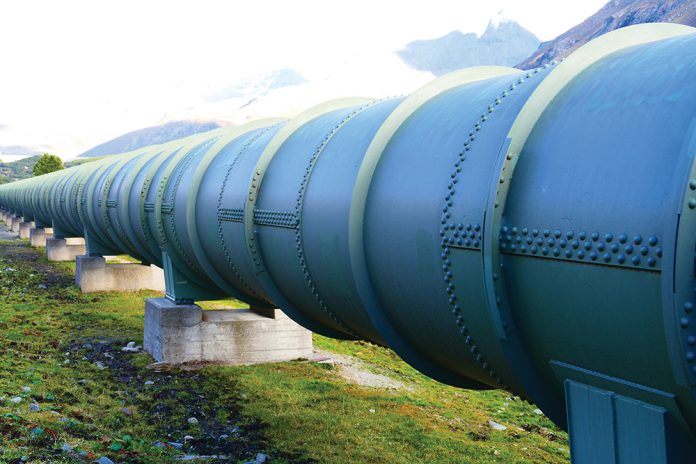Digital innovation is cutting time and cost from the process of planning, designing and optimising pipeline routes. By Adam Cullum, principal civil engineer, and Keith Simpson, principal water consultant at Mott MacDonald.
The most recent water resources planning guidance introduced the need for one in 500-year drought resilience, with consideration of climate change. The strategic resource and resilience options many water companies are exploring involve new water transfer pipelines.
Selecting and designing the route for these pipelines presents a substantial challenge, with the objectives of minimising capital and operational costs playing off against the environment, heritage and practicalities such as land access and avoidance/negotiation of existing infrastructure.
Design has been assisted but fundamentally unchanged by the advent of BIM and GIS. However, recent advances in artificial intelligence are better equipping designers to tackle the scale and complexity of new pipeline route selection. These tools are improving collaboration across the supply chain from early in the project cycle. And by enabling design teams to address a wider range of considerations and options, they are creating the possibility of improved project outcomes for society and the environment.
Powerful solution
Over the past five years, Mott MacDonald has developed a powerful design solution called Route Optimiser, hosted on its digital platform, Moata. It uses deterministic algorithms to compare and optimise the vertical profiles of multiple feasible route options, taking account of whole life costs, designated and visible constraints (for example parcels of ancient woodland) and geometric and hydraulic design rules. Solutions are visualised through a sophisticated GIS based user interface. Data can be exported at any stage in the project lifecycle – for example to refine hydraulic performance, assess environmental impacts, draw off bills of quantities, develop the detailed design and produce drawings.
The solution has turned developing and comparing route options from a task taking days and weeks into one of hours and days – each alignment can be developed in less than an hour, compared to a working day beforehand. Traditionally, the complexity of route planning projects made it possible to evaluate only a few options. Now it is time-efficient to compare multiple routes and sub-options.
Time savings on route planning are eclipsed by the benefits realised when it comes to implementing solutions. These can include capital and operational cost savings, carbon reductions, the avoidance of environmental and social impacts, and the potential for biodiversity net gain. A recent study comparing a solution developed using Moata Route Optimiser with a traditionally designed route found that whole life cost was reduced by up to 10%.
Mott MacDonald has resisted the temptation to assign all aspects of route selection to the machine (a highly sophisticated ‘genetic’ algorithm). This is because human oversight remains essential for identifying landscape features not recorded or sufficiently detailed in source data. For example, GIS datasets often fail to record a small copse of trees as a constraint or spot a narrow corridor between sensitive areas. With an engineer’s oversight, Moata Route Optimiser can generate feasible alignments to a high level of precision, rather than broad corridors. As options are explored and refined, the route becomes ever more detailed, ultimately being fixed for construction.
Options can be easily shared with clients and partners and developed live on screen.
It takes just minutes to turn an output into Civils3D plans and profiles drawings, semi-automating drawing production. Data can also be exported for detailed hydraulic and structural design calculations, allowing pipeline diameters to be optimised for anticipated operational flow regimes.
Because Route Optimiser is one of a suite of compatible digital solutions, cross-discipline integration can be achieved. Environmental impacts can be visualised and analysed using Moata Geospatial. Moata Land Management enables efficient communication with landowners and other stakeholders, for the purpose of surveying, land acquisition when necessary, preparation of legal notices, and construction access.
Moata solutions generate detailed audit trails showing how key decisions are made. The user interfaces assist clear and effective communication with everyone from landowners, statutory undertakers and contractors to water company chief executive officers.
Thousands of kilometres
Moata Route Optimiser has been deployed on 18 projects for eight UK clients, at all stages of the project lifecycle, representing thousands of kilometres of pipeline. Its capabilities and the outcomes achieved for clients won it the Pipeline Industries Guild Technology Award in 2021.
The solution is being continuously improved, informed by client feedback. Engineering faces a continuing struggle to attract, train and develop skilled professionals. Moata Route Optimiser is a response to that challenge, enabling engineers to achieve goals and outcomes faster, and focus their attention on areas where humans add the greatest value – solving problems and innovating. It’s a solution to future shortages of water and talent.



